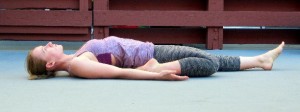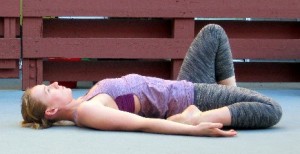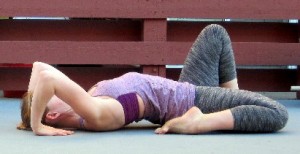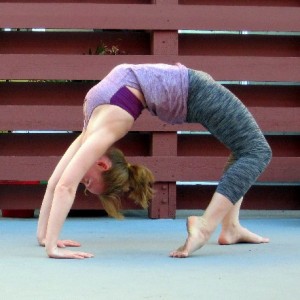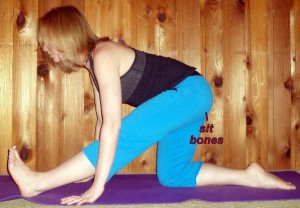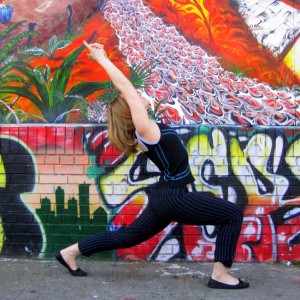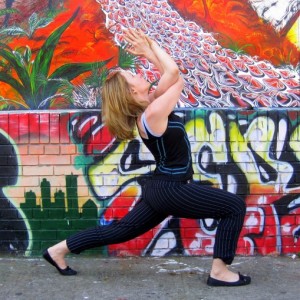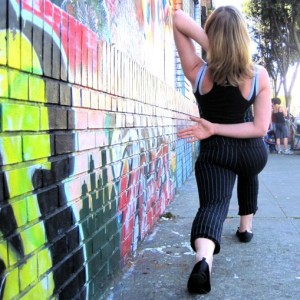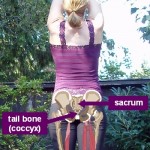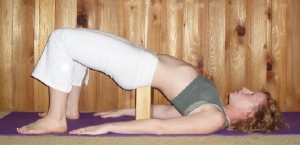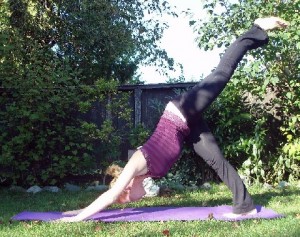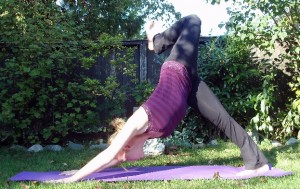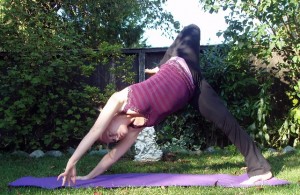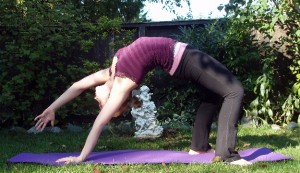If you’re comfortable in upward facing bow (also known as wheel or urdhva dhanurasana) and half supine hero pose, (ardha supta virasana) why not combine them?
Begin in half supine hero. If you cannot get onto your back comfortably in reclined half hero, keep working with other comfortable modifications on half hero rather than going on to the variation described below.
Bend your extended leg so the sole of the foot in on the floor and the heel is underneath the knee (most people can graze the heel with the hand in this position).
Place the hands palms-down above the shoulders on the mat, fingertips pointed toward the shoulders. Breathe.
On an inhale use the strength of you arms and legs to lift up and place the crown of your head on the mat. The sole of one foot should be on the floor, and the top of the other should be on the floor. Take your exhale to readjust the hands and feet so that the thighs are hips-width apart with the knees and feet pointed straight toward the front (or back) of your mat, and so that the hands are shoulder width apart with fingers pointed toward the front of your mat.
On your next inhale push into the hands and feet to lift all the way up into upward facing bow. Keep the thighs parallel, pressing into the big toe of the foot. To avoid letting the elbows wing out to the sides, draw them toward one another. As you lengthen into your arms and legs, send the tail bone toward the front of your mat and the chest toward the back of your mat to maintain length in your low back. Breathe.
To release, on an exhale, tuck the chin and bend into the knees and elbow to lower back into reclined half hero under control. Then, repeat on the second side.
